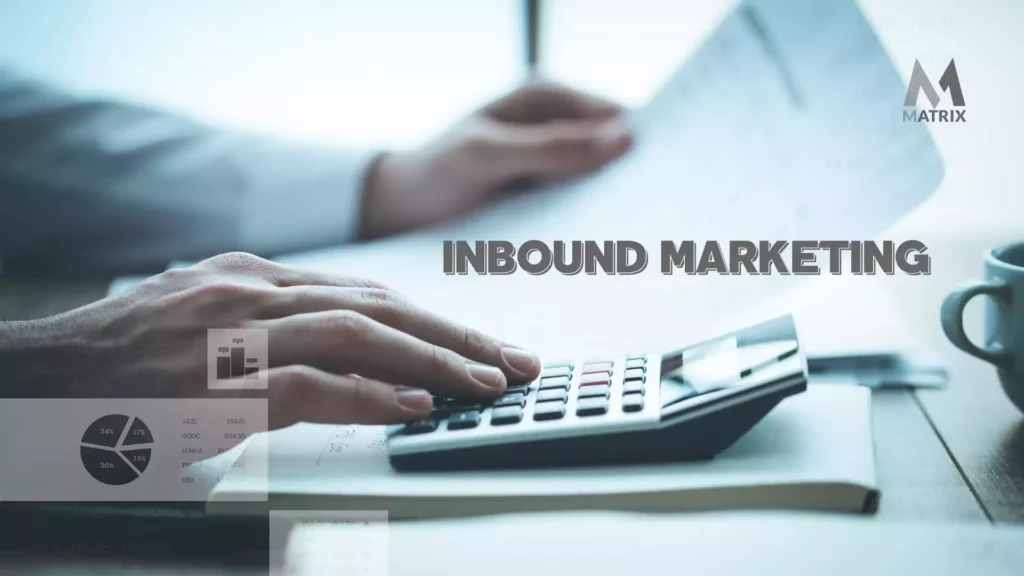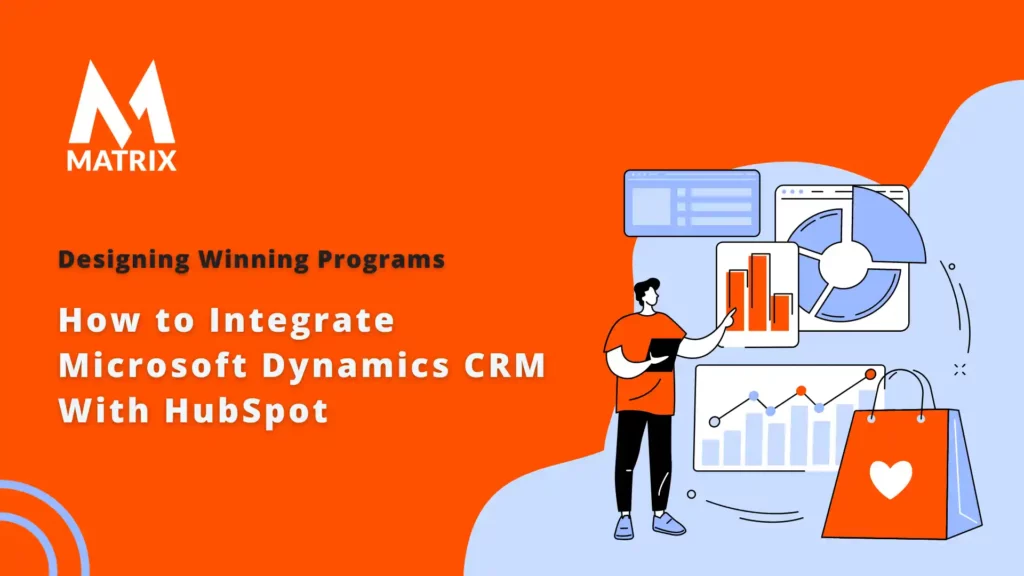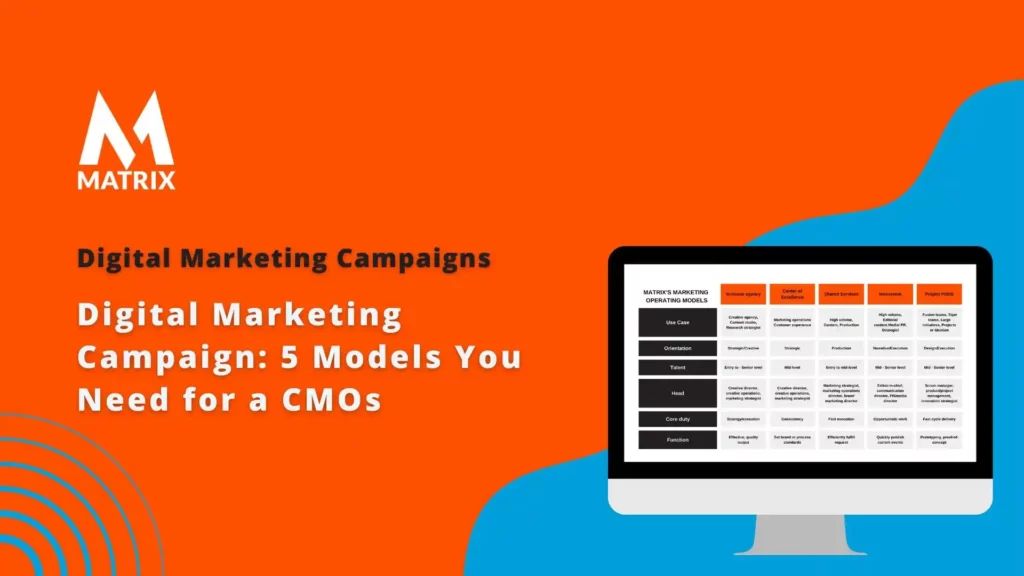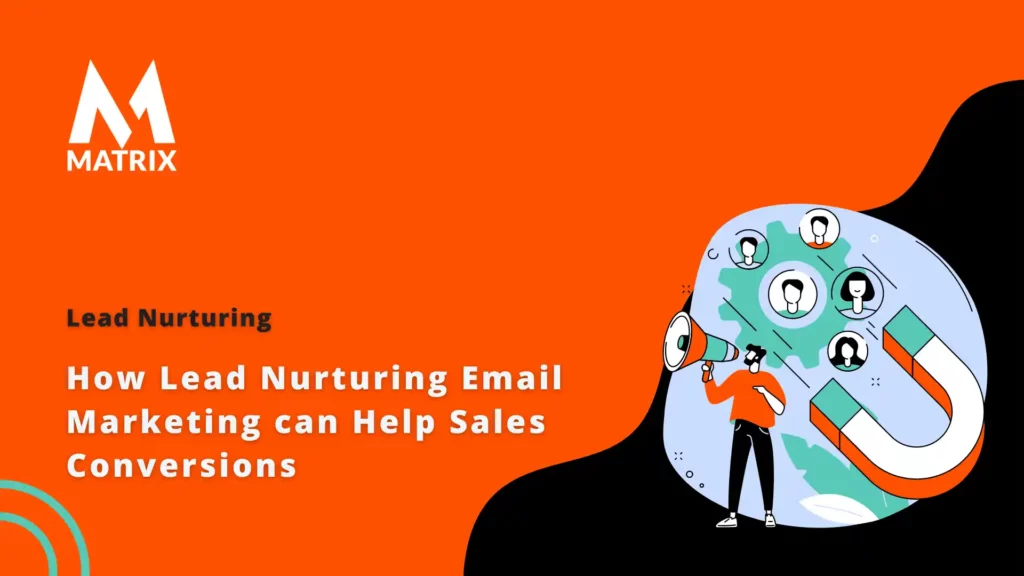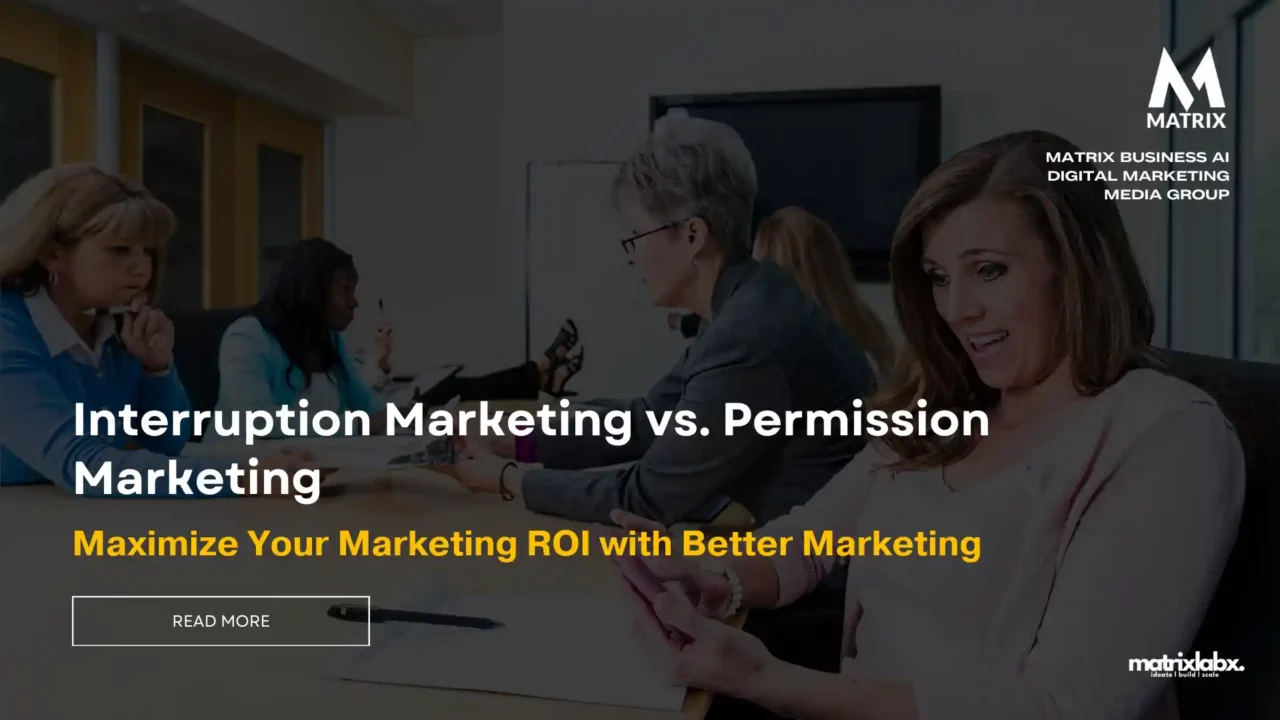Inbound marketing is a strategy that involves creating contextual content
Inbound marketing generates more leads with a lower cost of acquisition. How do we know? We’ve been doing it for 30 years. All inbound is a bundle of marketing services to sell HubSpot’s technology.
How did you wonder about this article? Maybe a referral or a keyword search. Either way, we’re glad you’re here.
So you have heard about HubSpot-right?
Early Examples of Inbound Marketing
While the phrase “inbound marketing” was first heard in 2006, the concept of inbound marketing was born many years prior. You can find examples of inbound marketing principles that date back to the 19th century, and we have highlighted three of them below:
- In 1845, Tiffany & Co. published a book called the “Blue Book” that provided customers with the information they needed to choose the products they wanted.
- Cyrus Hall McCormick, In the mid-1850s, used market research to come up with inbound methods for generating consumer interest in the mechanical harvester he had invented.
- In 1888, Sears and Roebuck took a similar approach when publishing a catalog that enabled the company to quickly and cheaply capture information about thousands of its customers.
In the 1960s, market research took hold, enabling businesses to gather information on customers’ habits and interests.
With a better understanding of the consumers’ habits and interests, marketers found a way to create more targeted ad campaigns. These changes paved the way for the development of outbound marketing.
HubSpot cranked out tons of content marketing with the term inbound marketing. Now we see people with little understanding nor how to implement a holistic plan.
Do you want to create an inbound marketing strategy that increases our volume of traffic, leads, and sales?
Inbound marketing is a strategy in which you attract visitors to your website by providing content that answers their questions or provides them with the information they need.
Inbound marketing for the middle-market organizations differs from the micro-business most HubSpot inbound agencies play. It’s a different game in the midmarket.
Our article about Why You Don’t Need an Inbound Marketing Agency because it’s nothing special. Most are some flavors of a digital marketing agency with varying experience and knowledge of trends and sales.
You can also use inbound marketing to convert this traffic into leads by offering something in exchange for their contact information, like a downloadable whitepaper.
The problem with most marketing strategies is that they’re interruptive. You have to pay for advertising or find ways of getting people’s attention, which is both expensive and don’t always work.
Here at inbound marketing, we believe there is a better way forward. That’s why we provide content on our blog that answers questions your potential customers might have about your industry or products.
This helps us attract visitors who are already interested in what you do, meaning less time explaining yourself before you get to business!
Inbound Marketing isn’t just an idea anymore – it’s the future of internet marketing and sales strategy.
It gives businesses like yours a real advantage over competitors by providing quality leads without spending money on ads and other interruption-based marketing tactics.
What is inbound marketing?
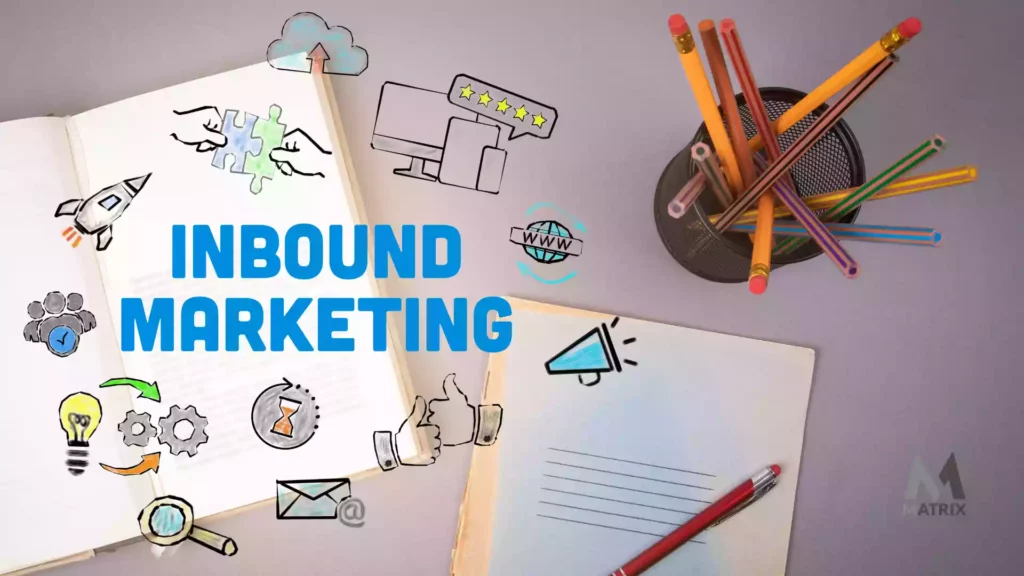
Inbound marketing is a strategy in which you attract visitors to your website by providing content that answers their questions or provides them with the information they need.
You can also use inbound marketing to convert this traffic into leads by offering something in exchange for their contact information, like a downloadable whitepaper or ebook.
Inbound marketing for a midmarket firm is much different than a reseller of bedding for an Airbnb.
What is outbound marketing?

Outbound marketing is a strategy in which you attract visitors to your website by providing content that answers their questions or provides them with the information they need when they want it.
- Outbound marketing is different from inbound marketing in that it targets potential customers who are not yet aware of the products and services available on your site.
- It’s important to note that outbound marketing requires more effort than inbound because it involves reaching out to people who may not be actively looking for your offer.
- The most common type of outbound campaign is a direct mail campaign in which you send postcards or letters to people hoping to attract their attention.
- Another way outbound marketing differs from inbound marketing is that it can target potential customers who are already aware of what your company offers and may even be in the market for your product.
- This strategy often involves advertising on social media networks like Facebook and Twitter to attract users’ attention subtly.
- A good example of this method in action is when companies sponsor posts on Instagram with images or videos about their products.
Inbound marketing vs. outbound marketing
Inbound marketing is a strategy in which you attract visitors to your website by providing content that answers their questions or provides them with the information they need.
It’s often done in blogs, videos, infographics, social media posts, etc.
You can also use inbound to convert this traffic into leads by offering something in exchange for their contact information, like a 30-Day free trial.
Outbound marketing is different than inbound in that it targets potential customers who are not yet aware of the products and services available on your site.
This strategy often involves advertising on social media networks like Facebook and Twitter to attract users’ attention subtly.
Inbound marketing benefits
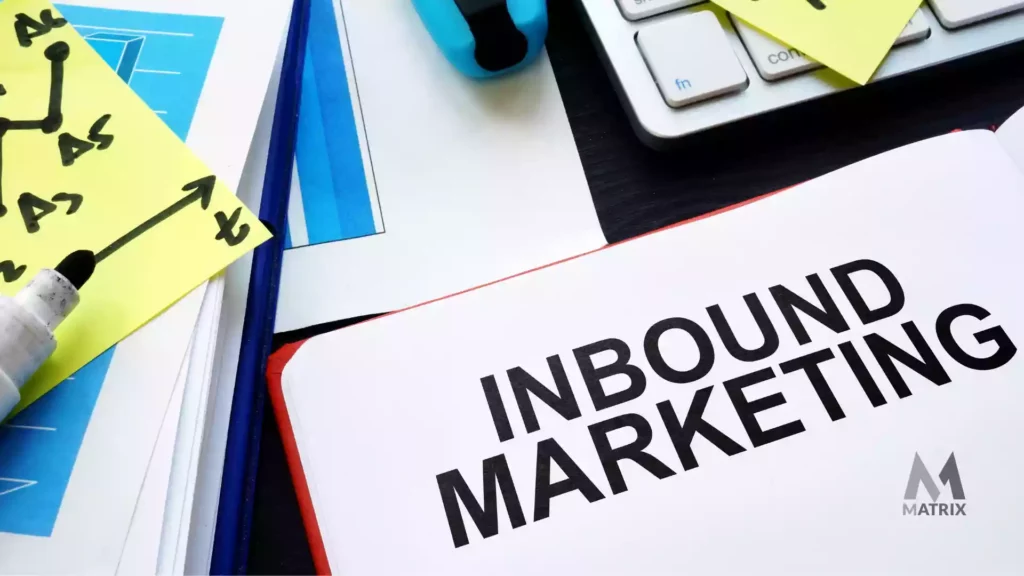
- More leads: When customers find exactly what they’re looking for without searching, they want to buy from you immediately. Inbound helps attract these customers with ease.
- Higher conversion rates: When the best content about your product or service points people in your direction, they’re more likely to convert into sales than if they had found their way there by performing extensive research.
- Better ROI: Inbound gives businesses in any industry a better return on their inbound investment because it’s cost-effective.
- More efficient distribution of inbound efforts: With inbound marketing, you can track your inbound content and traffic to ensure your inbound efforts go how you want them to.
- Improved SEO ranking: In addition to attracting more customers to your website with digital marketing, you’re also likely to improve your search engine rankings when you have high-quality articles that focus on relevant topics.
Outbound marketing benefits
- Leverage existing brand awareness: If you already have a presence in the marketplace through other means, like direct mail or outdoor advertising in your industry, outbound marketing can enable you to take advantage of this and attract more in-market customers who recognize and trust your brand.
- Find prospects in new markets: Outbound marketing can enable you to reach in-market customers in new geographic areas where you do not have a strong presence.
- Address unmet needs: For example, direct mail can in-market customers in industries where they may not actively look on the web. This opens up opportunities for brands specializing in particular niches or offering products related but different products from their main product line.
History of Inbound Marketing
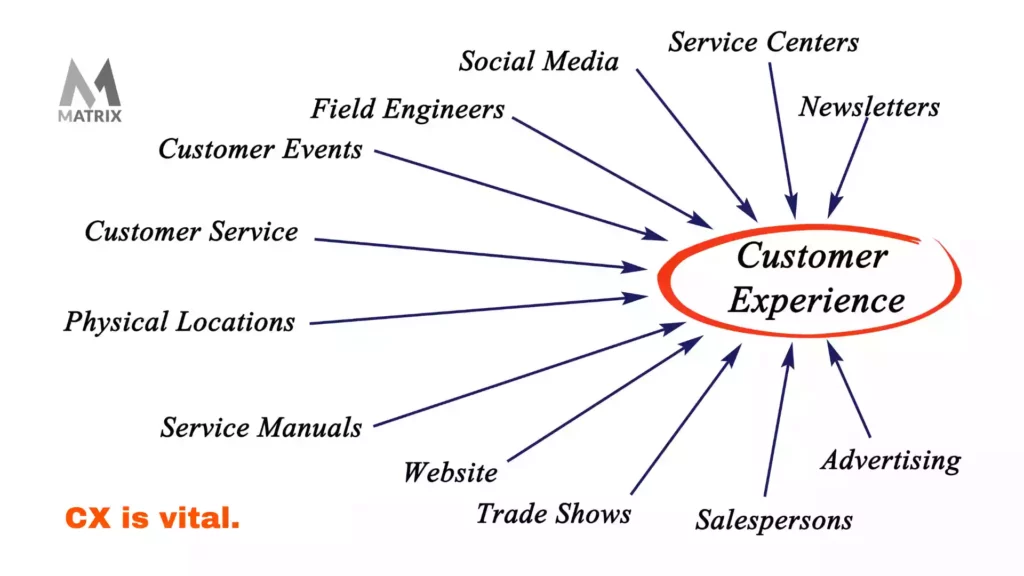
Inbound marketing has been in use since 1994 when Jay Levinson, in his book entitled “Guerrilla Marketing,” outlined the benefits of inbound in contrast to outbound marketing. Yes, I bet you thought it was HubSpot. Ask any HubSpot sales rep, and they will tell you that.
In inbound marketing, marketers encourage visitors to a company’s website by creating content that answers their questions and provides them with the necessary information.
The only difference between inbound marketing and digital marketing is nothing. It was just a clear way for HubSpot to try to make inbound marketing agencies sound special. It was a differentiation for a while.
Inbound has recently experienced a surge in popularity due to its effectiveness in today’s digital age.
When inbound spending aligns with a company’s inbound sales and inbound lead generation strategies, inbound can help bring in more in-market customers who are actively looking for what you have to offer.
Inbound Marketing Stats

- Blogging As of 2022, a survey of bloggers found that 39% of respondents always checked the analytics of their blog posts.
- WordPress users produce about 70 million new posts and 77 million comments monthly. (WordPress, 2020)
- Blogs are among the three primary forms of media used in content strategies today. (HubSpot, 2020)
- 89% of content marketers used blog posts in their content creation strategy in 2020. (Content Marketing Institute, 2020)
- 18% of marketers choose WordPress as their website content management system (CMS). (HubSpot, 2022)
- Marketing spending is expected to grow by 14% in 2021. (Deloitte, 2020)
- 83% of traffic to marketing blogs comes from desktops. (SEMrush, 2019)
- Content Strategy 70% of marketers are actively investing in content marketing. (HubSpot, 2020)
- 78% of companies have a team of one to three content specialists. (SEMrush, 2019)
- Web traffic is among the top two most common measurements of success for content marketing strategies. (HubSpot, 2020)
- Marketers today create content for multiple audience segments — marketing to three audience segments is most common. (HubSpot, 2020)
- Nearly 40% of marketers say content marketing is a very important part of their overall marketing strategy. (HubSpot, 2020)
- “Content Marketing Strategy” is the most searched query related to content marketing. (SEMrush, 2019)
Inbound marketing and sales conversions

In digital marketing, prospects naturally find your company to get the information they need in an easy and timely manner. In inbound, you can use inbound advertising on social media networks to attract users’ attention more subtly.
The best content about your product or service points people in your direction, which makes it more likely to convert into sales than if they had found their way there on their own by performing extensive research.
If you are just getting started with digital marketing, you want to have a plan to know what kind of content you are going to post regularly and how often.
Much digital marketing depends on the correct automation in online marketing. Marketers in inbound use various automation tools to make their digital marketing more efficient and effective.
Inbound is not inbound without proper automation.
Here are some key things to think about when considering inbound marketing automation
- Understand the success metrics of your business
- Choose an inbound platform that is scalable
- Implement a lead scoring system
- Automate the nurturing process.
- Optimize lead nurturing with behavior data
- Define value-based engagement campaigns for your audience
- Be in complete control of your inbound
- Identify and prioritize inbound leads
- Manage inbound leads across multiple channels, like email and social media
- Implement lead tracking so you know exactly how your leads are coming in
- Qualify leads accurately, so they don’t fall through the cracks
- Measure the performance of every channel so you can figure out what to scale and what to cut
- Prepare reports to keep everyone on board and apprised of progress.
What is the inbound marketing process?

The inbound marketing process in inbound marketing is a lot like any other type of marketing campaign. You want to start with key content to get your audience to know what you offer and why they should invest in your company.
You want to be proactive in communicating with prospective customers and make sure that you provide them with valuable information and tips to get them to convert into sales or at least become loyal customers.
You can also use inbound for lead nurturing which ultimately benefits your business by keeping your contact prospects engaged and informed about upcoming promotions and changes in your products or services.
The inbound process typically starts with creating website content such as blog posts, infographics, email newsletters, and ebooks to promote your company’s inbound strategies.
Inbound is a marketable strategy because it lets you attract visitors and provide them with the information they need easily and quickly. In inbound, companies also use inbound advertising on social media networks to attract users’ attention more subtly.
Marketers today create content for multiple audience segments — marketing to three audience segments is most common. Nearly 40% of marketers say content marketing is a very important part of their overall marketing strategy. “Content Marketing Strategy” is the most searched query related to content marketing.
In inbound marketing, prospects naturally find your company to learn more about your inbound marketing strategies.
Email is one of the most effective inbound channels in an inbound marketing process. Email lists are often used to provide visitors with information that they want promptly, but marketers should be aware of their email list’s deliverability.
The inbound lead nurturing process allows you to identify which leads are showing interest in your business and take them through an automated sales pipeline to ensure that they are kept engaged until the very end by offering them relevant content at every step along the way. The nurturing period typically lasts about six months before prospects can be converted into customers or regular contact clients.
So-called “warm” leads have already expressed interest in your inbound marketing strategies in some way, which means that you can begin to nurture them to make sure they turn into sales. Nurturing inbound is all about providing visitors with relevant and timely information to get the results you need.
In digital marketing, marketers should think of their “ideal” customers to create content for them and better serve their needs over time by becoming better acquainted with them via your website. By using such a strategy, marketers may see an increase in leads by 15% or more in six months compared to other campaigns.
One important thing in any inbound process is in complete control of your messages so that you can determine how they reach your prospects in the digital marketing system.
A strong digital marketing strategy includes blogging. By creating content in blogs, you naturally draw visitors to your website in an inbound marketing process.
You can also use email newsletters to reach new audiences and establish yourself as a thought leader in your industry by aggregating all of your latest thoughts and opinions on a specific topic in one place. As a result, both old and prospective customers learn more about what you have to offer them because you make it a point to provide them with valuable information rather than promotional material intended for selling purposes only.
Inbound allows you to earn money over time via multiple channels, or in other words, getting paid for helping them solve their problems in a way they like best. There are several different types of lead generation programs available to marketers today. The list below shows the three main program types:
- Lead Generation (Online/Print) – Generating leads via print advertisements and direct mail pieces.
- Leads on Demand (Online) – Leads generated in real-time using advertising.
- Self-Service (Offline) – Leads are generated in formats such as newspaper and magazine ads, in which the consumer calls one central number to contact your company directly.
The digital marketing process is a method that helps marketers earn money over time by earning inbound links and other referrals from visitors in an inbound system.
Why is inbound marketing important for marketers?

Marketers need to use this strategy because customers are six times more likely to buy from someone they know and trust than by contacting a vendor directly. When you use an inbound approach, customers can become acquainted with you and your company firsthand instead of relying on what others say about you if they need a product or service.
In inbound, marketers should think of their “ideal” customers to create content for them and better serve their needs over time by becoming better acquainted with them via your website. By using such a strategy, marketers may see an increase in leads by 15% or more in six months compared to other types of campaigns.
Other strategies marketers may use include building backlinks or social media engagement through inbound promotion to attract new audiences in an inbound marketing process. You should also use inbound links through outbound campaigns to gain more exposure for your website while allowing other marketers to do the same in return by sharing their content with your audience.
Inbound Tactical used by marketers
Blogging is important
Blogging is a powerful inbound marketing tool in which you can share your opinions in a way that builds trust with your audience. In inbound marketing, the inbound links you earn from doing this in a very natural way allow you to increase your search engine rankings over time.
For inbound marketing to work in the best way possible, you should use blogging to provide valuable information to your existing and potential customers in an inbound marketing process. In inbound marketing, inbound links combined with a strong social media presence help marketers reach new audiences over time by sharing their content in an inbound system that benefits everyone involved.
The form of sharing used by marketers today includes things such as blog posts on WordPress or Tumblr blogs so that they can share their latest ideas and opinions with readers directly via RSS feeds when compared to using methods such as marketing in which a company can share their latest blog posts in an inbound system with no interruption.
In inbound, content sharing is a natural process in which companies or professionals deliver valuable or educational information in an inbound system that benefits everyone involved.
This tactic is used by marketers today to earn new business from existing and potential customers alike. In an inbound approach, earning shares for your articles may lead to more attention from Google over time due to the high-quality nature of your content.
Social media has proven effective in inbound marketing.

Online social networks like Facebook, Twitter, and LinkedIn are becoming increasingly essential in inbound marketing because they provide free platforms for businesses to interact with their target audience.
Social media makes it easy to share your content with other social media users, which helps attract even more visitors to your site. Content shared on these web pages can also be indexed by search engines, further boosting the reach of your inbound marketing strategy.
There are many social media sites, including Twitter, LinkedIn, Pinterest, Reddit, and YouTube. Social media in inbound marketing is a powerful tool in which you can share your opinion to build trust with your audience in an inbound system.
In inbound marketing, the inbound links you earn from doing this in a very natural way over time allow you to increase your search engine rankings.
For inbound marketing to work in the best way possible, you should use blogging in an inbound system whereby customers can become acquainted with you and your company firsthand.
In inbound marketing, inbound links combined with a strong social media presence help marketers reach new audiences over time by sharing their content in an inbound system that benefits everyone involved.
In inbound marketing marketers, sharing is a natural process whereby companies or professionals deliver value to information naturally that benefits everyone involved.
This tactic is used by marketers today to earn new business from existing and potential customers alike. In an inbound marketing approach, earning shares for your articles may lead to more attention from Google over time due to the high-quality nature of your content.
Lead nurturing
Lead nurturing is when inbound marketers monitor inbound traffic to qualify these inbound prospects for inbound marketers to create content in the form of email messages or automated messages that will convert inbound prospects.
For inbound marketers, lead nurturing is considered inbound marketing in action.
Landing pages

When inbound marketers use inbound marketing techniques to attract inbound prospects to landing pages on their websites, they use inbound marketing.
Inbound marketers use landing pages because they are the best way to ensure that inbound traffic will convert into leads.
When you visit a landing page, an immediate benefit should be offered to you upon entry, like a downloadable whitepaper, for example.
If this benefit isn’t immediately obvious when you first arrive at the landing page, it’s probably not converting visitors into leads properly and needs some improvement.
Social media
It might be surprising for some people that social media can be used in inbound marketing. Still, inbound marketers know that social media platforms like Facebook, Instagram, Twitter, and Pinterest are ideal for inbound marketers.
Social media is where leads come from. Social media is the essence of digital marketing because it uses social media effectively as an inbound marketer.
You need to create content that answers questions people have about your products or services, which means that your content on social media must be educational.
Content Marketing
Education-based content is also called “informational” or “how-to” content by inbound marketers.
When you build a library of useful, informative articles on your website to attract more visitors to read these articles, which are sometimes written in the form of blog posts, inbound marketers refer to this as “content marketing.”
Inbound marketers know that to attract inbound prospects with content, you must make it relevant and useful.
Paid advertising
In some cases, inbound marketers can successfully use paid advertising to convert inbound prospects into leads.
Online advertising is a great way for inbound marketers to quickly build a pool of inbound prospects, making conversion rates higher on their landing pages because a higher volume of people is now exposed to their content.
This strategy is only effective if the inbound marketer has an effective lead nurturing system in place, though, or they will lose most of those potential leads they just spent so much money acquiring.
Traditional inbound marketing
Traditional inbound marketing is when inbound marketers combine inbound and outbound techniques to attract inbound prospects.
This strategy is more advantageous for inbound marketers because it means that they don’t have to spend as much money acquiring inbound leads to grow their businesses, and it also ensures lead nurturing because the inbound marketer’s website has lots of useful content on it, which attracts visitors and converts them into leads.
Email marketing
Email marketing is another inbound method inbound marketers use to market to inbound prospects.
Email marketing consists of inbound marketers sending email messages to promote their products and services and convert these inbound prospects into customers.
Website optimization is important.
Website optimization is important in inbound marketing because it impacts the number of visitors that you receive.
When you optimize your website, you can rank higher in the search engine rankings, which will drive more traffic to your site.
Website optimization includes not just on-page SEO but also off-page SEO strategies like link building and social media.
SEO and inbound marketing
Search Engine Optimization (SEO) is a marketing strategy that you want to rank higher in search engine results. This is done by writing keyword-rich content, having a high-quality backlink profile, and scheduling social media posts in advance to create engagements. Create inbound links for SEO’s benefit and better site ranking.
Creating inbound links is important in inbound marketing because it will improve your search engine optimization.
Search engines like Google use these inbound links to determine the rank of each website, so they are very important when trying to increase traffic to your site. You can create inbound links by guest blogging on other websites in your industry or offering up resources (like white papers) on your website in exchange for them linking back to you.
An inbound link is an online reference to a web page deemed relevant and helpful by another web page.
It is considered ‘inbound’ because it is coming towards the web page rather than pointing away from the web page (which would be considered an ‘outbound link’). There are several ways in which you can inbound links to your website.
Long-tail keywords are in phrases.
The long-tail keywords are in phrases, and they describe in more detail what the user is searching for.
They usually contain three or more words in a specific order concerning the topic that is being searched. These phrases also include synonyms, spelling variants, and related searches.
SEO difficulty
The way search engines rank websites is based on relevance, quality, and reputation.
The natural SEO guidebooks say that users determine relevance by seeing how many visits a page receives from other websites or social media shares from current visitors.
Search ranking
To increase your natural rankings, make sure every website page contains search engine optimization criteria such as titles, meta descriptions, and keywords.
High-quality content with relevant information will win over a site packed with keyword stuffing – the use of very specific words or phrases that have little to do with the topic at hand – because it can negatively impact the search engine’s algorithms.
Search volume
One factor in ranking on the search engines is the number of searches related to a particular topic. SEO is a long-tail keyword strategy that separates phrases into two parts: umbrella keywords and long-tail keywords.
Sales funnels
A sales funnel is a model that describes the process someone goes through in order to take action in response to an inbound marketing campaign.
A customer typically enters at the top of the funnel and then opts in to engage in email or social media marketing in order to learn about what you have to offer.
They’ll work their way down the funnel until they make a purchase. Here are the basics of inbound marketing basics in more detail.
- Content – The cornerstone of inbound marketing is great content that provides value to your customers in some way or another, but doesn’t necessarily sell them on any products or services right away.
- Promotion – A critical element in inbound marketing is promotion through social media channels like Facebook and Twitter to get people interested in you and what you have to offer. Promoting your content across these platforms allows it to reach a larger audience, hopefully, enticing people down your sales funnel where they can opt-in for even more information about your company or industry. If they become customers, consider yourself successful in this internet-based strategy that most businesses are employing today.
- Landing Pages – Landing Pages in inbound marketing are the web pages in which you offer inbound services. It is important to create landing pages with in-depth content in order to convert traffic into leads. A landing page should have a call-to-action that gives the visitor some incentive to take some kind of action. The most direct way in which you can do this is by offering an ebook or other downloadable item in exchange for their email address. Landing pages also have a very significant role in outbound marketing, where it is necessary to create a landing page in order to allow people access information about your organization on the internet.
- Thank-you pages – In inbound marketing, a thank-you page is a website on which you offer inbound services. In this web-based strategy that most businesses employ today, the main goal of the thank-you page is to turn inbound leads into customers.
The customer will enter a thank-you page in order to take advantage of the inbounds services. It is important for this webpage to have content in-depth in order to convert cross-traffic into leads with an incentive.
The most direct way in which you can do this is by offering ebooks or other downloadable items in exchange for their email address.
Thank-you pages also have a very significant role in outbound marketing, where it is necessary to create these pages in order to allow people in the inbound services.
- Conversion – The conversion in inbound marketing is a web page in which you offer inbounds service in order to motivate customers to engage in further e-services in pursuit of purchasing something or opting in for more information about your company or industry. It is important for this webpage with content in-depth and an incentive; the most direct way is to offer an ebook or other downloadable items in exchange for their email address, creating thank-you pages with e-services like social media channels like Facebook and Twitter. Thank-you pages also have a very significant in inbound marketing where it is necessary to create these pages in order for people in the inbound services.
It is important for this webpage with content in-depth and an incentive; the most direct way is to offer an ebook or other downloadable items in exchange for their email address, creating thank you pages with e-services like social media channels like Facebook and Twitter.
Tools to use in inbound marketing

Tools to use in inbound marketing are vital.
An inbound marketing tool that helps businesses in inbound marketing with tools to automate inbound marketing.
HubSpot for midmarket companies
HubSpot’s CRM platform provides automation tools that streamline inbound lead management, web forms, landing pages, online ads, and social media promotions. HubSpot uses A/B testing to measure the return on investment of inbound lead generation campaigns.
The most recent trends in inbound marketing are becoming more advanced in data science and behavioral machine learning with advanced software algorithms.
They also use visitor behavior intelligence to create contextual ad content for their audience through big data analysis.
Important inbound marketing tools are inbound lead management, inbound web forms, landing pages, inbound social media promotions, A/B testing to measure the return on investment of inbound lead generation campaigns.
These are critical tools in achieving inbound marketing success using software algorithms that offer marketers contextual ad content for their audience through big data analysis.
In all business fields, including digital marketing and traditional, an up-to-date understanding of new trends is necessary to deliver value for customers or clients while maintaining a competitive edge over others within the same industry.
That’s why businesses need to stay on top of inbound marketing automation to provide inbound marketing solutions.
Sign up for a free demo today if you want to learn more about inbound lead management, inbound web forms, inbound landing pages, inbound social media promotion, and A/B testing with HubSpot.
Keap for Small Businesses
Keap is an inbound marketing tool that helps businesses grow their customer base by automating inbound marketing for e-commerce marketers, including tight integration with Shopify.
Keep inbound marketing software automatically sharing inbound web content in a sequence that maximizes conversions, generating more inbound leads. Keep inbound marketing automation software highly affordable for any inbound campaign.
To be in the inbound business, marketers should pay attention to trends in inbound marketing automation. To succeed in inbound marketing, marketers should read up on inbound lead management, inbound web forms, landing pages, and A/B testing with Keep.
Keep (Infusionsoft)is great for Shopify and other e-commerce customers.
Examples of inbound marketing
You can find inbound marketing in any industry in which you’re running in competition with other companies to get the attention of potential customers.
Leads in inbound marketing are also known as inbound leads.
The term inbound marketing defines inbound lead generation that is based on attracting potential customers through content. The content may be in the form of blogs, free offers, videos, or social media.
What does it take to do inbound marketing effectively?
To do inbound marketing effectively, you need to think in terms of the inbound approach to marketing rather than focusing on outbound marketing.
This means that you will generate an inbound lead instead of waiting for one to come in.
This may seem easy enough to do, but it’s not as easy as it seems because to generate an inbound lead, you must know what your customer wants and give them content relevant to their needs.
To make inbound marketing work for your company, you need first to identify your customers and what they want. Then, create content that will address their wants and needs by giving them what they want first.
In today’s digital age, inbound marketing is an important tool for businesses of all shapes and sizes, including new start-ups looking to establish a presence in their industry.
Conclusion about Inbound Marketing Basics
Are you looking to increase your leads and sales?
Inbound marketing is the process of drawing customers towards a business through content instead of pitching them with ads. It’s about earning attention by creating valuable, relevant content that pulls people in. And it works! Companies that use inbound marketing strategies see an average of 20% more traffic than those that don’t.
We can help you create a strategy that will work for your business and get results fast! Our team has years of experience working with businesses like yours to develop custom plans tailored to their needs. Let us show you how we do it so you can start seeing real results today!
Click here and contact us for a free consultation on how we can help grow your business using inbound marketing strategies!
General FAQs
What is inbound marketing is and how does it work?
Inbound marketing is a strategy in which you attract visitors to your website by providing content that answers their questions or provides them with the information they need. You can also use inbound marketing to convert this traffic into leads by offering something in exchange for their contact information, like a downloadable whitepaper for example.
What’s the difference between inbound and outbound marketing?
Inbound marketing is the newest type of online marketing in which companies attract visitors to their site by providing content that answers their questions or provides them with the information they need. inbound marketing can also be used for conversion, in which you offer something in exchange for an address or contact information, like a downloadable whitepaper. Outbound marketing involves counteracting advertisements that are not wanted at places where people might see them. this means these ads are visible to people even if they don’t want them in some way or another.
How do inbound marketers generate leads through content?
Inbound marketers generate leads through content by providing in-depth blog posts on their websites that answer basic buying questions in order to steer customers in the right direction. This means inbound marketing is custom-tailored for companies because it provides visitors with the information they need before making a purchase decision.
What inbound marketing tools and tactics do inbound marketers use?
Inbound marketers use in-depth blog posts, infographics, white papers, ebooks, explainer videos, press releases, social media campaigns, video content marketing, and so on.

